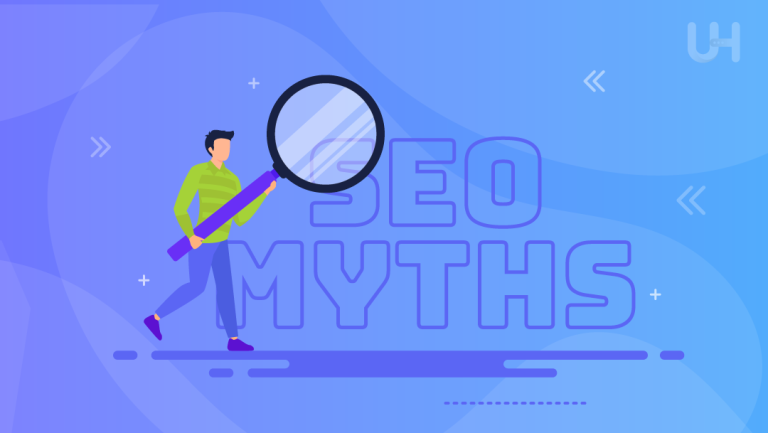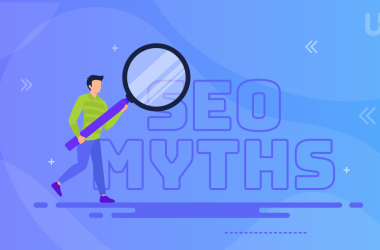Sometimes, despite a website’s high ranking for important keywords, the traffic may not be satisfactory. Web creators sometimes forget to create an appealing page summary, although it plays a crucial role in improving the click-through rate (CTR). In this article, I will explain what it is and why it is worth preparing a unique meta description for your website.
What is a meta description?
A meta description is a short description of a page’s content displayed in organic search results. Its purpose is to entice users to visit your website and increase the number of clicks. Most CMS systems allow editing this tag directly in the HTML code or through functionality in the site management panel. In WordPress, you can use the Yoast SEO plugin.
Meta tags, such as meta titles and descriptions, are HTML elements defined in the header section of a page marked with the <head> </head> tags. Google has officially stated that the meta description does not affect a page’s ranking in search results. However, this does not mean that it is irrelevant.
SEO determines the ranking order in search engine results, but the user decides what link to click. It is where the meta description plays a crucial role.
Why is it worth setting a meta description?
An appropriate meta description can affect the performance of a website in several ways. In this case, the behavioral factor is significant. Think about the page description as a short advertising slogan that aims to catch the potential customer’s attention and influence their decision to click.
The search results list consists of few elements. You will find only the website address, title, and meta description. Having the ability to set your meta title and description displayed in SERPs, you should maximize their potential.
Well-crafted meta descriptions should accurately describe the page content and make users consider it as the best match for their query. Descriptions generated automatically by Google may not interest potential customers.
Although meta description doesn’t directly impact SEO, it can indirectly have some SEO influence. A good summary will positively impact the increase in the click-through rate (CTR). Google bots understand higher CTR as a signal that your page is well-matched to the query and place it higher in SERPs.
You’ve already learned one of the myths about SEO. Do you want to learn more? Read the article where we discuss the most important SEO myths.
Where should you prioritize setting the description?
If you manage a small website on shared hosting, creating unique meta descriptions for each subpage won’t be a significant problem.
Complications arise when dealing with a large and complex website, where creating meta descriptions for each subpage would be a time-consuming task. In such a situation, focus on a few types of pages within the site first.
Setting a unique meta description aims to influence user behavior and improve the click-through rate (CTR) of page views in search results. A practical approach is to create compelling descriptions on high-ranking pages with existing traffic to achieve quick and effective results.
Pages with little content
Automatically generated descriptions based on the content of a page make more sense when it is extensive and of high quality. However, descriptions for pages with little content can be confusing for users; they can contain only headers, contact information, or cookie usage details. Therefore, on such subpages, you should create the meta description yourself.
Homepage description
The most significant page must have an attractive meta description set, which will be displayed, among other places, when someone shares your page on social media.
Category pages
Category and offer pages generate valuable traffic, so make every effort to ensure they rank as high as possible in organic search results and stand out among other competitive offers. One element that can tip the scales in your favor is an appealing meta description.
Product Pages
A potential customer searching for a specific product may come across several stores with the same offer. You can increase the chances of customers choosing your website by creating unique meta descriptions. They should highlight the advantages of the product and the store.
How to write good meta descriptions?
There is no perfect, universal template for creating meta descriptions that can be applied to all web pages. The page summary varies depending on the industry, page type, or search intent. However, there are simple rules to follow when preparing an attractive page summary.
Length of meta descriptions
The length of the meta description itself is not limited, and you can find many examples online where its content significantly exceeds the recommended character count. Search engines determine the appropriate width for descriptions, and it’s up to you to write texts that fit and are fully displayed.
A description that exceeds the allowed length is not considered an error, but the search engine will truncate it. In the past, Google would show descriptions of up to 320 characters. Currently, the maximum length for a displayed meta description is approximately 150-160 characters.
The length of the page description expressed in character count is imprecise because individual characters can have varying widths and occupy more space. Search engines analyze the width of the page description in pixels. On desktop devices, Google Search has a maximum width of 980px, while on mobile devices, it is 680px. It translates to approximately 120 characters.
You can find many websites online that allow you to download the title and description of a page and check if they will be displayed properly in search results.
Don’t forget about achieving a high position in search results. To accomplish this, you need to address several important elements. One of them is choosing the right server location. If your customers are primarily French, it’s worth considering local hosting.
Such a virtual server will make your website load faster, which is a crucial ranking factor for Google, but the physical server location will also work in your favor.
Conciseness and keyword usage
Meta descriptions should be specific and concise. Due to the limited length, it is worth placing the most relevant information about the page and the primary keyword at the beginning of the description. Why include a keyword if it doesn’t influence rankings?
After a user enters a specific keyword in the search field, Google bolds it in the result descriptions to help find relevant results. The presence of keywords in the page description does not directly affect the ranking position, so don’t cram in multiple keywords. Focus on the best one and the description’s readability.
Uniqueness and alignment with user intent
A unique page description can better cater to user expectations. Users may be searching for information, comparing prices, or looking for specific products. When your meta description aligns with their query, it convinces users to consider your website valuable and encourages them to explore the content further.
The presence of duplicated descriptions unrelated to a specific subpage is unappealing from a user perspective. Users browsing the search results list should see that your page best meets their expectations.

Call to action
By including a CTA you are directly addressing the internet user and suggesting what they should do. Call to action such as “Check the offer,” “Order now,” or “Click and see” are attractive, but you have the opportunity to approach the topic more individually.
Consider what users are looking for and generate their interest by using a creative call to action. Depending on the type of content on the specific subpage, you can encourage users to read the entire article, check the price list, or place an order for the product they are seeking.
Power words
You can incorporate power words to strengthen the message. It’s a way to grab the user’s attention and stand out from other search results and impact the conversion rate. Examples of descriptive adjectives used to strengthen the message in meta descriptions include: free, latest, comprehensive, current, or cheapest.
By using words like “free delivery,” “available now,” “revolutionary product,” or “latest collection,” you increase the chances of reaching the user. You can also appeal to the senses by describing the scent, taste, or appearance of a product.
Emojis and symbols
A meta description should interest the user with its content but also attract attention visually. Emojis are becoming increasingly popular, as they undoubtedly help to stand out. You can match them to the content or use universal elements such as ✅, 👉🏻, or ⭐.
Adding emojis in meta descriptions comes with some risk. Including emojis carries some risk, as they may not be displayed correctly in search engine results. It can make the description less readable, impacting how users perceive it.
The issue can arise due to the user’s device type, web browser type or version, and the search engine itself. However, despite these factors, many people take the risk and incorporate emojis into their meta descriptions.
An alternative could be HTML symbols, which seem to be a safer option. With HTML symbols, you have many types of arrows, stars, and other elements available to enhance the meta description. You can find a list of them on the w3schools.com website.
Why doesn’t Google display my meta description?
Google can adapt the website description and present it in a way it deems most useful to users. A good meta description may appear in its original version in search results, but the final evaluation of the description’s quality lies with the algorithms.
Off-topic descriptions
When a page description has nothing to do with its content, Google displays the most relevant excerpt from the subpage. The same happens when an owner sets one meta description for the entire website.
An even worse practice is attempting to manipulate the description to attract users, which initially may seem effective. Such actions won’t bring any durable benefits; in the long run, your website may lose its position in Google rankings.

Dissatisfied users who quickly leave the site because they didn’t find the information they were looking for contribute to an increased bounce rate. It is another ranking factor that can work against you in this case.
Too many keywords
Although it hasn’t influenced search result rankings for almost 15 years, you can still find many websites with keyword-stuffed meta descriptions. Keyword stuffing is an unacceptable practice by Google, which makes no sense and can do more harm than good.
Conclusion
Although meta-description content does not directly impact search engine rankings, it holds significant value in website optimization. The meta description primarily influences user behavior, as a compelling summary can entice users to click on your link. By adhering to some straightforward guidelines, you can craft a standout description that sets you apart from competitors.
Creating a powerful description doesn’t require much effort, so it’s worth taking some time to prepare meta descriptions for your important pages.
If you enjoyed this article, then you’ll love UltaHost hosting platform. Buy SEO-friendly web hosting, get 24/7 support from our support team and a free domain. Our powered infrastructure focuses on auto-scaling, performance, and security. Let us show you the difference! Check out our plans!












